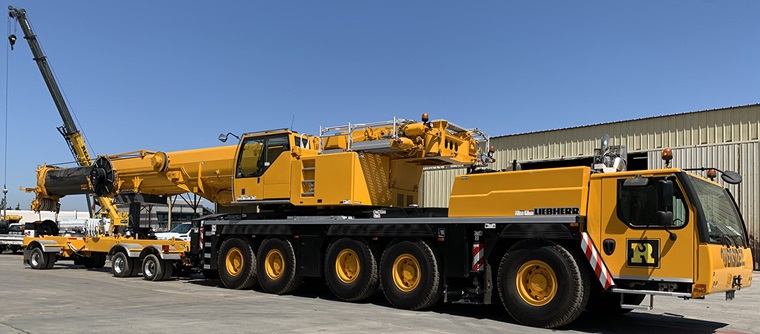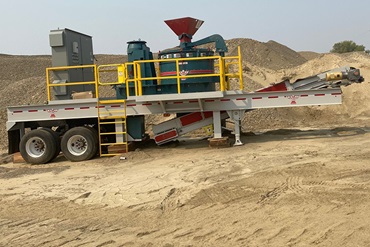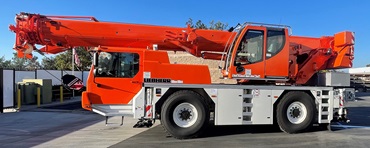Virtual vehicle-inspection pilot for transportation permits is delivering

Caltrans reduces worker exposure and improves goods movement with system that skips in-person appointments
A pilot program that converted the in-person inspection process for certain commercial vehicle loads into a virtual one has proven a success, by saving time and money for Caltrans, reducing the exposure of our workers in the field, and expediting goods movement by streamlining what had been a cumbersome but critical obligation for transportation permit seekers.

The pilot program was initiated by Caltrans Office of Commercial Vehicle Operations in January 2020. The timing proved to be fortuitous, with the emergence of COVID-19 forcing most state offices to limit in-person contact with the public only a few months after the virtual permit process began.
Owners of vehicles or ones that carry loads exceeding height and weight requirements for the stretch of roadway they plan on traveling must first obtain a transportation permit from Caltrans. Previously, Caltrans commercial vehicle inspectors traveled to designated locations throughout the state to visually review vehicles or loads, which involved recording vehicle dimensions and weight, logging data, verifying permit eligibility and compiling the information in a report.
Applicants for permits had to schedule appointments two weeks ahead of time of transport and bring the vehicle or the load in question to an inspection site.
To create a more efficient process for applicants and Caltrans, a virtual inspection system was devised and set up by the Office of Commercial Vehicle Operations team. Rather than securing in-person appointments, those seeking permits are now required to complete new online forms depending on the type of fixed load and vehicle, and submit supporting documents such as photos or diagrams. Inspectors review and verify that information and issue an inspection report.
The information in the inspection report is reviewed by the California Highway Patrol when permitted vehicles pass through Commercial Vehicle Enforcement Facilities (weigh stations) along the state highways. Misleading or erroneous information is subject to corrective actions.

The streamlined virtual inspection process delivers numerous advantages for permit applicants and Caltrans, and fulfills the goals set out in the Caltrans 2020-2024 Strategic Plan.
Strengthen stewardship and drive efficiency – Securing a virtual inspection typically now takes less than a week, compared with the previous two-week window. In addition to being a time-saver, customers are spared the inconvenience of traveling to an inspection site ahead of their travel date to physically meet with inspectors.
Cultivate excellence – Prior to this process change, about 40 percent of a commercial vehicle inspector’s time was spent traveling. Switching to virtual inspections has eliminated this travel time, as well as employee expenses that included hotel, per diem, airfare when needed, and use of a state vehicle.
Safety first – With no physical interaction needed to complete inspections, Caltrans inspectors and applicants are not exposed to COVID-19 danger. Inspectors were able to adhere to state stay-at-home orders issued at the height of the pandemic while still maintaining the critical permitting function efficiently to help keep those traveling on our roadways safe.
Lead climate action – Eliminating the need for either party to travel to inspection appointments means fewer vehicle trips and less air pollution.
The number of commercial vehicle/load inspections performed by Caltrans rose from 468 in 2019 to 715 in 2022.
Sources: Caltrans Office of Commercial Vehicle Operations, Division of Traffic Operations

